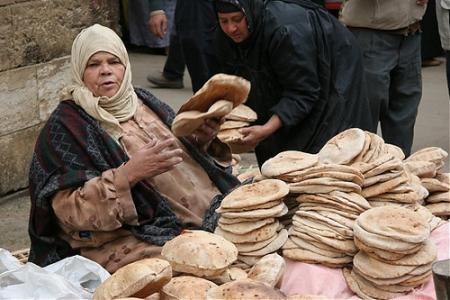AL TAZAJ Restaurants
 The first
Al Tazaj restaurant proudly opened its doors in the holy city of Makkah in 1989
The idea started by Sheik Abdulrahman Fake who owns Fakieh poultry farm in
Saudi since 50 years ago, his wife used to cook for him a small farouj chicken
because the meat of the small chicken is very tender and delicious, also by
using the very traditional Arabian recipe which it make the test of the farouj
became even more delicious just like what we have right now in our restaurant.
So the idea came to Sheik Abdulrahman to open a fast food restaurant and serve
the same BBQ. fresh Chicken. From then onwards, it’s been nothing but a success
story because Al Tazaj uses live poultry
from Fakieh poultry farm and now Al Tazaj currently serves its fresh barbequed
chicken in more than 100 locations making us the 1st national fast food chain in the middle east. From
here, international Group transferred the idea to Yemen to enable Yemeni people
to enjoy this delicious and fresh taste with our incomparable services and
quality of meals.
The first
Al Tazaj restaurant proudly opened its doors in the holy city of Makkah in 1989
The idea started by Sheik Abdulrahman Fake who owns Fakieh poultry farm in
Saudi since 50 years ago, his wife used to cook for him a small farouj chicken
because the meat of the small chicken is very tender and delicious, also by
using the very traditional Arabian recipe which it make the test of the farouj
became even more delicious just like what we have right now in our restaurant.
So the idea came to Sheik Abdulrahman to open a fast food restaurant and serve
the same BBQ. fresh Chicken. From then onwards, it’s been nothing but a success
story because Al Tazaj uses live poultry
from Fakieh poultry farm and now Al Tazaj currently serves its fresh barbequed
chicken in more than 100 locations making us the 1st national fast food chain in the middle east. From
here, international Group transferred the idea to Yemen to enable Yemeni people
to enjoy this delicious and fresh taste with our incomparable services and
quality of meals.

Arabesque
A one of a kind resto-bar, Arabesque is a
fusion-inspired mecca of Turkish & Middle-Eastern cuisine. Blending
elegantly themed interiors and a unique ambience, Arabesque aspires to be your
choice for a fun filled family meal, a quiet romantic dinner, relaxing after
work drinks and Meze or even some scrumptious takeaway. Situated on the Carre
Street in Melbourne’s Elsternwick, our Mezze style of dining encourages a
sharing environment. Positioned as a modern hub with traditional influences, we
have quickly grown not only as a vibrant restaurant but also as a mainstay in
the bustling nightlife of Melbourne.
A fine Ottoman cuisine, perfectly describes the menu
at Arabesque. We offer an exotic array of fresh, delicately balanced dishes
that draw on traditional Turkish, Moroccan, Middle Eastern and Mediterranean
influences. As is customary, the dishes are designed for sharing.
Taste of
Egypt Mediterranean cuisine
 Taste Of
Egypt is a fine dining, Mediterranean restaurant. The name ‘Taste Of Egypt’
does not only refer to the flavor of the food but also the decor, music and the
complete cultural experience.
Taste Of
Egypt is a fine dining, Mediterranean restaurant. The name ‘Taste Of Egypt’
does not only refer to the flavor of the food but also the decor, music and the
complete cultural experience.
We specialize
in fine Egyptian (Mediterranean) Cuisine. Middle Eastern foods are rich in
flavor but not spicy unless our guests want to indulge in our spicy hot sauce.
Our food is all halal. Our fresh juice blends and smoothies are one of our
chef’s specialties and the presentation often leaves our guests taking
pictures.
Ehab and
Paula Radwan decided to open Taste of Egypt with two separate visions in mind.
Ehab wanted to share his culture and cuisine with Canada while Paula wanted to
help boost tourism in her city. This husband and wife team comes together with
their separate visions achieving a wonderful dining experience.
 Felfela Restaurante
Felfela Restaurante
Egypt has many restaurants in various
cities, the most important thing is the Felfela restaurant, this restaurant is located
in the center of Cairo and is visited by many tourists so it is a good plan to
go out to dinner with your family and friends, this restaurant is the best on
Egypt.
The Restaurant Felfela
offers typical food of cairo as
rice, lentils, chickpeas, pasta and onion, these foods are grown on farms owned
restaurant, also in this restaurant selling food from around the world as
hamburgers, hot and baking soda to dogs. Food is of excellent quality, fresh
and clean. the main dish is chicken sandwich or meat.
Restaurate decor goes according to Egyptian
culture, with papyrus and pictures on the walls, lamps on tables and Egyptian
figures, is a very elegant and romantic atmosphere. in this restaurant the
atmosphere is quiet with Egyptian music during lunch.
The prices are the best in the cairo, you
can get plates for 10 dollars and every Wednesday there are promotions,
foreigners give 50% discount if you go twice in one week and you can get gift
vouchers.
References
http://www.arabesque.com.au/site/menu.html



























